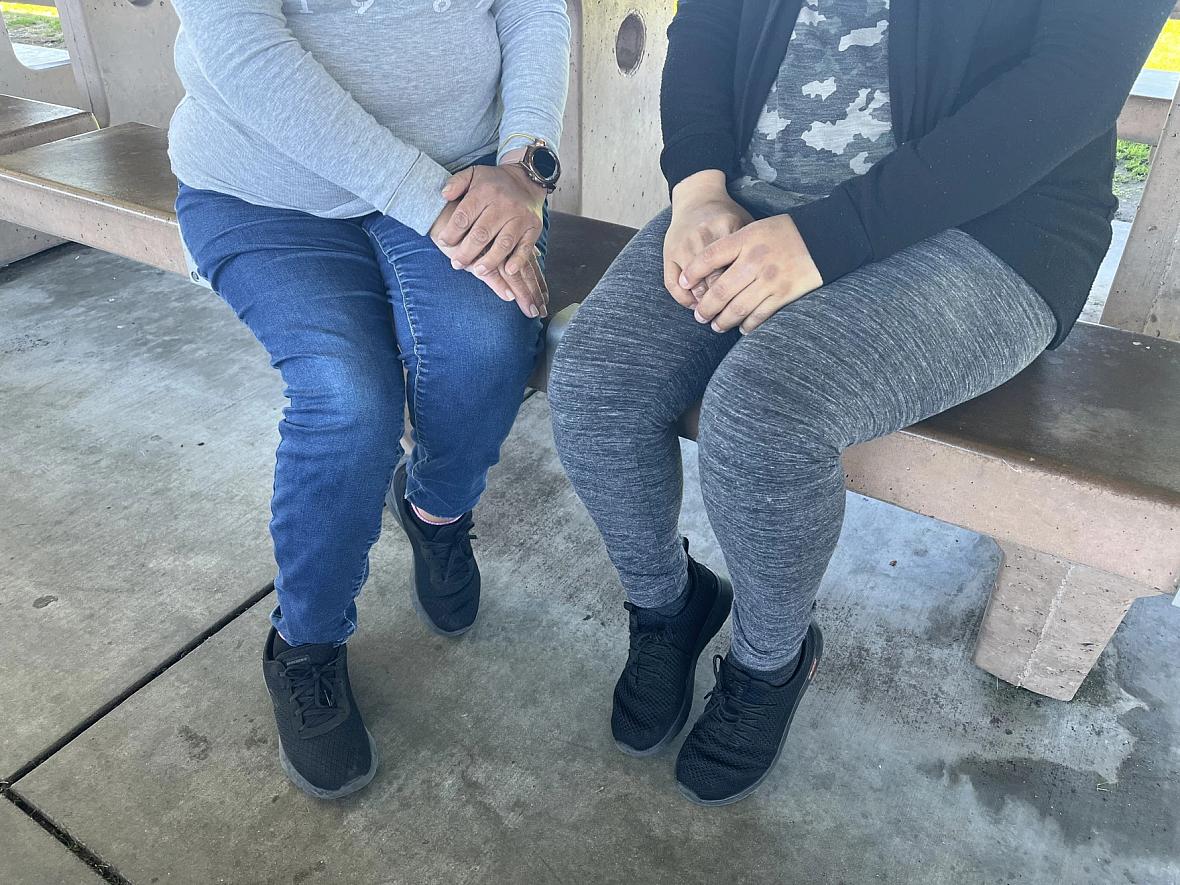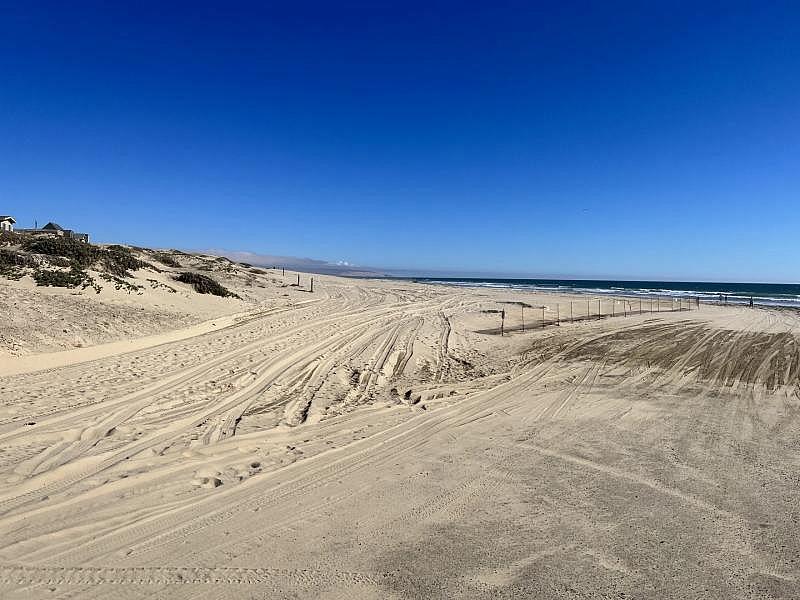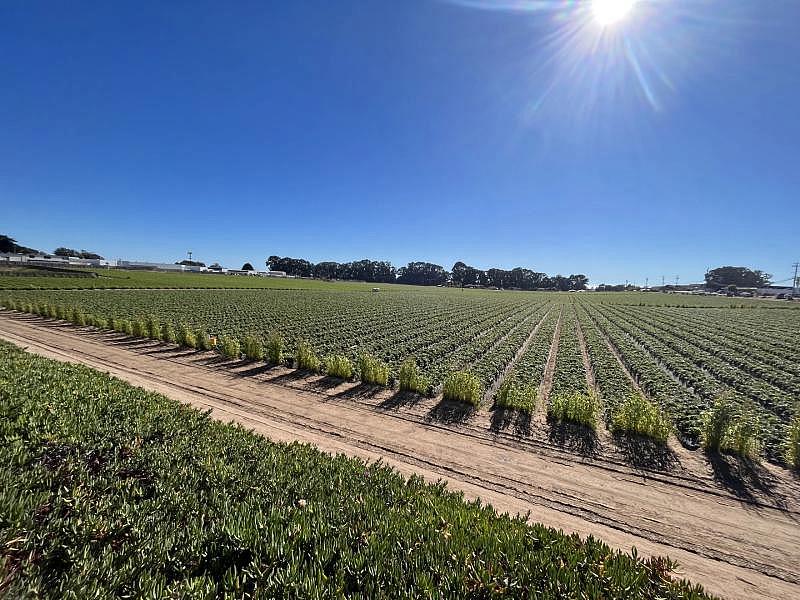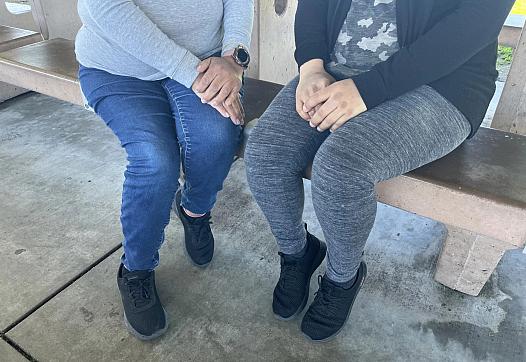Clouded in Crisis: How air pollution impacts the health of marginalized communities on the Nipomo Mesa
This story was originally published in KCBX with support from the 2022 California Fellowship.

Maria (left) and Soledad (right), who wish to remain anonymous, live and work on the Nipomo Mesa. Maria has asthma and Soledad experiences symptoms of breathing in air pollution.
Rachel Showalter
Para leer esta nota en español, haga clic aquí.
Public health officials have known for years that air quality year-round is often poor on the Nipomo Mesa in South San Luis Obispo County. It can cause severe health issues for people in the area — especially people of color and low-income folks.
Maria, whose last name we are omitting for her privacy due to the sensitivity of this topic, has lived in Oceano for 25 years. She’s married, has four kids — and she has asthma.
She uses an inhaler several times a day.
“Two years ago, I [didn't use my inhaler much], but now I use it more frequently,” Maria said.
She said she hasn’t always had this problem but, over the years, it’s gotten worse. She is one of thousands of residents living and working in Oceano and Nipomo who experience negative health impacts from the polluted air.
Some of that pollution comes from emissions and wildfire smoke. But a lot of the particulate matter that people breathe every day in that area comes from dust and sand blowing from the Oceano Dunes.
The San Luis Obispo County Air Pollution Control District (APCD) has studied the levels of South County’s pollution extensively and often issues ‘Better Breather Alerts’ which notify residents of high particulate days.

“It’s more windy. And [it's always been] windy, but not like this,” Maria said.
Maria is right that it’s been windier recently. She said she thinks the excess wind could be kicking up more sand than usual into the air and impacting her breathing.
Meghan Field with the San Luis Obispo County APCD said the agency has been notifying residents of high particulate days this year. Although, she said, air quality monitors show pollution is actually less than it used to be.
“When we compare what we’re seeing right now to even five years ago, those peaks — the parts per million that we’re seeing — are significantly less than what we were seeing five, ten years ago,” Field said.
Still, the public health impacts aren’t going away. Maria has been exposed to blowing dust for decades. She said her neighbor’s grandson also has asthma and Maria’s daughter, Liliana, has breathing issues too.
Local and state air resources boards along with public health departments know this as an issue — especially among minorities and low-income communities.
“We recognize that there are certain areas in our county — the Nipomo Mesa area and some of the Oceano area — where people are more impacted from the harmful effects of air pollution,” Field said.
While concentrations of air pollution might be the same across all economic levels, low-income folks and people of color have a disproportionate health burden from that air pollution.
According to the American Lung Association, a lot of that disproportionate impact across the country has to do with things like rate of exposure, susceptibility and access to healthcare.

“We do know, nationally, that low-income communities — and particularly in persons of color — there are higher rates of respiratory illness, particularly asthma,” said San Luis Obispo County Public Health Officer Dr. Penny Borenstein.
Borenstein said the Public Health Department doesn’t have local data mirroring that trend, but they do extrapolate.
“It stands to reason that that would not differ in our community — that we’d see a greater impact in those subpopulations,” Dr. Borenstein said.
A lot of agricultural workers on the Nipomo Mesa are outside all day and breathing in more air pollution than someone working in an office or in an air-conditioned home.
But for folks already earning a low wage without allotted sick time, it’s hard to sacrifice income and go home. Field, with the APCD, said the agency knows that setting aside the funds to purify the air inside their home is even more of a challenge.
“In addition to having that bad air pollution while they’re working outdoors all day, they come home and their filtration systems might not be up to par as well. So their indoor air quality is bad as well,” Field said.
The barriers don’t stop there.
In the second article in this series, we’ll meet Soledad, one of Maria’s friends, who picks fruit on the Mesa for work.
We’ll hear about her experience working in agriculture and explore the roadblocks workers on the Mesa face that worsen their exposure to poor air quality, and keep them from seeking care.

